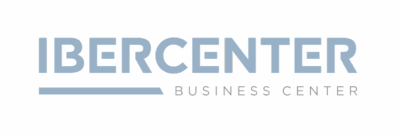Within the digital transformation movement, the well-known agile methodologies, which we talked about HERE, have been one of the fundamental pillars of this disruptive advance in the business world.
As you well know, there are several agile methodologies, and one of the most used and implemented worldwide is the agile Kanban methodology, which we are going to talk about today in depth.

What are agile methodologies?
Before talking about the agile Kanban methodology, we would like to give you a brief introduction to agile methodologies. These refer to work processes that adapt to the conditions of the project, thus being able to achieve greater flexibility and immediacy in the response, which facilitates the reduction to the maximum of the project duration.
With all this, we can make project management more flexible, autonomous and efficient, reducing costs and time while increasing productivity.
What is the Agile Kanban methodology?
The agile Kanban methodology is defined as a visualisation system that is used in production processes, which tries to coordinate in an assembly line the on-time delivery of each part at the right time.
In this way we avoid overproduction and unnecessary storage of the product.
By means of the system it is possible to create harmony in the production of the required products in time and quantity. In its implementation, cards are glued to the material containers and removed when the containers are used.
The agile Kanban methodology is closely related to the beginnings of mass production.
Advantages of the agile Kanban methodology
Employing any methodology within a business or project results in a few advantages and disadvantages.
The advantages of the Agile Kanban methodology are as follows:
- Performance measurement: it is possible to know the performance of the workers and the team, being able to detect any problems that arise during the project.
- Workflow organisation: the workflow is clear at each stage of the project thanks to the organisation of tasks by status and the estimated duration of each task. This makes it possible to foresee the right amount of work that is affordable for the achievement of goals.
- Meeting delivery times: thanks to the organisation of the flow, we can meet the delivery times demanded by the client.
- Distribution of tasks: the idea of being able to see the tasks that have been done and those that remain to be done is useful to make a good distribution of everything and to organise the team.
- Improved product quality: thanks to a good organisation, times can be better controlled, problems can be detected, and the most appropriate solution can be found.
- It avoids the accumulation of work: by having a preview of the planned tasks and the estimated time to carry them out, the team can organise itself and assign each job without exceeding it.
Disadvantages of the Agile Kanban Methodology
On the other hand, it is interesting to know the disadvantages that we can face with the application of the agile Kanban methodology:
- Cost: when using this methodology for very large units, the storage of the system may be very expensive.
- Limitations: by limiting the number of tasks, in the case of huge jobs, we will not be able to apply this methodology, because many of the workers will be unemployed.
- The Kanban method is not optimal for all projects: Kanban assumes repetitive production systems, so variations or unexpected events can affect the result.
- Failure to anticipate increases in demand: with the use of Kanban it is more complex to handle management changes caused by the accumulation of new tasks, resulting in work overflow.
Practices of the Agile Kanban Methodology
Next, let’s look at the practices of the agile Kanban methodology:
Visualisation of the work
With this methodology we can visualise how the work progresses through the different stages. A Kanban card starts the task on the left side of the board, and as the team progresses on it, it will slowly go through the following columns until it reaches the “Completed” column.
In this way we can know in real time the process and the status information of the project.
Limit work in progress
The agile Kanban methodology is based on early delivery, so all tasks should be done quickly from one column to another and avoid getting stuck in an ambiguous state of “work in progress”.
It is interesting to establish a set of work boundaries, so encourage the team to focus on finishing individual tasks and avoid multitasking.
Workflow management
Practice number 2 recommends limiting the amount of work in progress, and this is best done by optimising the flow of tasks within the Kanban board. Managing and improving the workflow helps to control the time allotted for the work and thus reduce delivery times.
This way we ensure that we are delivering the tasks or shipping the new products while they are still relevant.
Implementing explicit process policies
Ensure that the team has established and communicated the conventions. The process policies should guide the team in implementing the Kanban methodology, and everyone in the team should be encouraged to participate and innovate the Kanban policies.
Implementing feedback loops
In the agile Kanban methodology, feedback needs to be collected from two different groups, the customers on the one hand and the team on the other hand.
- Collect customer feedback on the quality and effectiveness of the solution produced by the team. If any problems have appeared such as bugs in a code or any defects in the product, the Kanban flow needs to be revised, and more time needs to be added for review, adjustments and evaluation.
- Consult frequently with the team on the process of implementing a Kanban framework. This gives us the opportunity to foster leadership at all levels and improve the team’s process policies.
The agile Kanban methodology is undoubtedly one of the most optimal today, which is why it is implemented by a large number of companies of all sizes and sectors.






